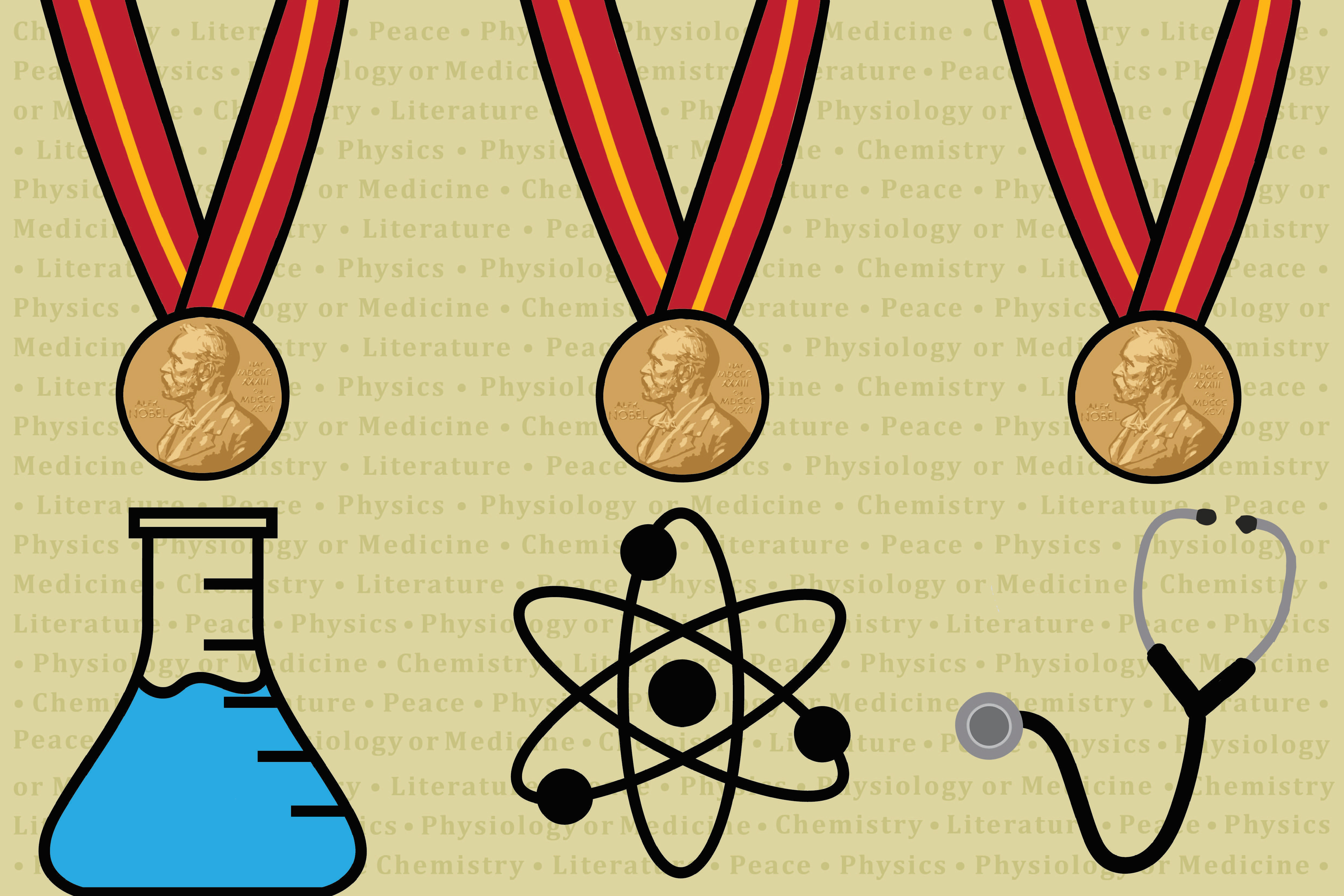
Graphic by Savannah Christensen / North by Northwestern
The Nobel Prize in Medicine: Tick tock, sleep rocks
What was the prize for?
Discovering what makes humans tick, literally. These scientists honed in on the mechanisms regulating body clocks down to the protein cycle. Our circadian rhythms also has a mass influence on our physiology such as blood pressure, hormone levels, feeding and body temperature. Messing with our sleep wake patterns in a way that is out of sync with the earth’s rotational cycle can have a detrimental effect on our health and make us susceptible to various diseases.
Who won?
Jeffrey C. Hall and Michael Rosbash of Brandeis University and Michael W. Young of Rockefeller University in New York.
Who’s doing research in this field at Northwestern?
Northwestern University’s Feinberg School of Medicine houses the Center for Sleep and Circadian Medicine. The Evanston research powerhouse that tackles sleep research is the Center for Sleep and Circadian Biology, located at Hogan Hall. Just last year, Dr. Joseph Bass discovered that muscles have circadian clocks that respond to exercise. Neurobiology professor Fred Turek is also focused on the study of sleep and circadian rhythms, but with respect to how they affect seasonal reproduction.
The Nobel Prize in Physics: A wrinkle in time (and space)
What was the prize for?
The discovery of gravitational waves (aka ripples in the fabric of spacetime) that proved the last part of Einstein’s Theory of Relativity. This proves that space and time are interconnected and fluid, which means that the universe is basically chaotic, unpredictable and full of scary black holes of doom that suck up everything in existence.
Who won?
A small leading team part of the LIGO project comprising of Kip Thorne from the California Institute of Technology, Rainer Weiss from the Massachusetts Institute of Technology and Ronald Drever who was also previously at Caltech.
Who’s doing research in this field at Northwestern?
Professor Vicky Kolgera and Shane Larson were part of the LIGO project when the discovery was announced. They experienced history in the making when two black holes colliding were recorded and transmitted after long periods of silence.
The Nobel Prize in Chemistry: A whole new (microscopic) world
What was the prize for?
They developed a method to image three-dimensional bio-molecules such as proteins and viruses, which will expedite the understanding and study of the molecule. For many proteins and other biological molecules, shape gives clue to function, and figuring out the precise shape of something will allow scientists to figure out how it interacts with its cellular surroundings.
This discovery has been useful in terms of research with the Zika virus and may have future applications for finding viral cures and treatments.
Who won?
The prize was awarded to Jacques Dubochet, Joachim Frank and Richard Henderson, from University of Lausanne, Columbia University and Cambridge University respectively. Interesting tidbit: Dubochet has dyslexia, and noted that it gave him a different perspective growing up. See the entry under 1955 of his hilarious CV.
Who’s doing research in this field at Northwestern?
In 2009, Northwestern received its own Cryoelectron microscope, used primarily for predicting the onset of cancer. The Center for Advanced Molecular Imaging is doing research of similar caliber. Last year, engineering researchers played around with virus shapes and sizes to study the delivery method. Here are all the labs in Feinberg doing research on protein structure and design, and here are all the labs studying biochemistry, structural biology and biophysics.